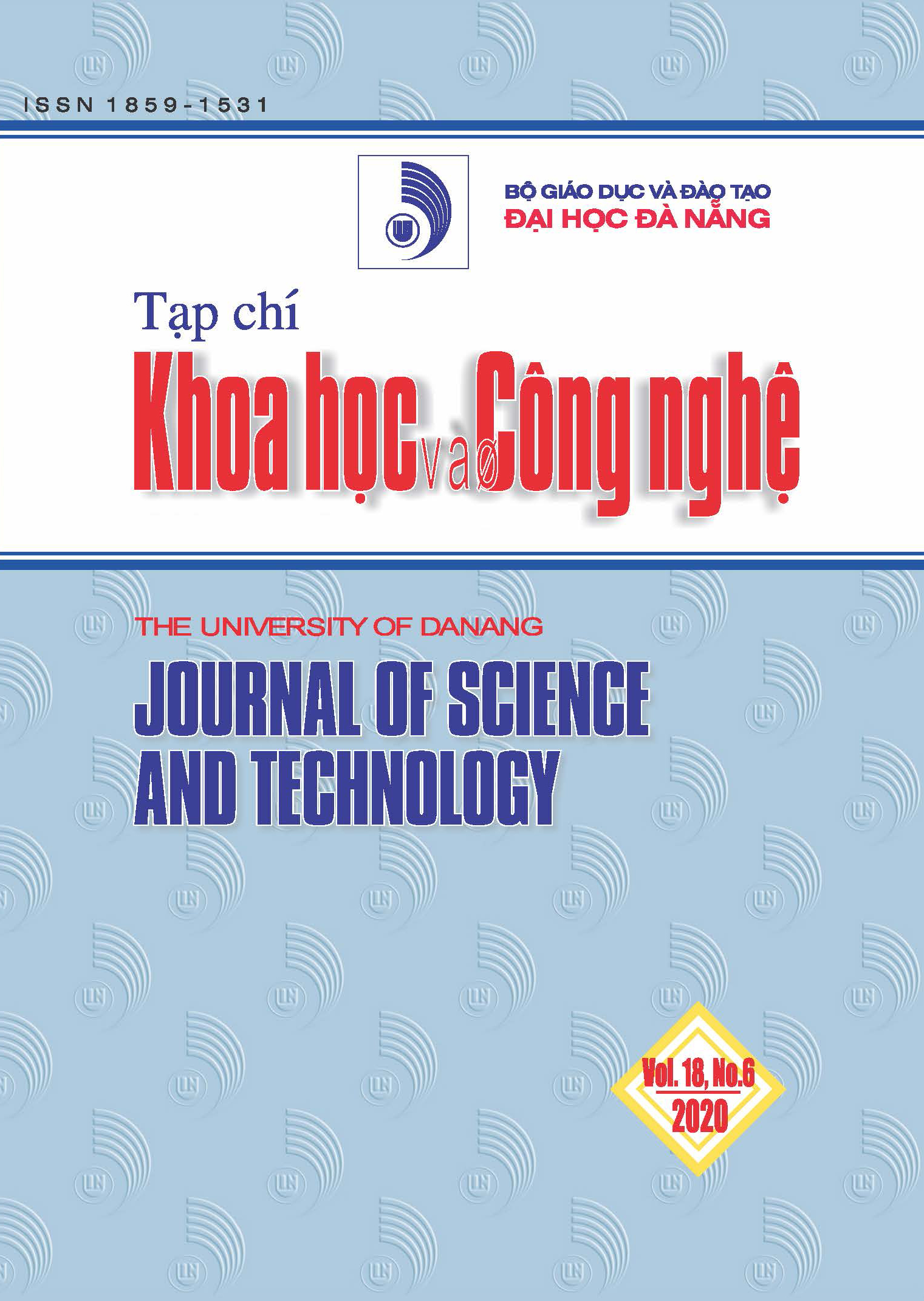The uncertainty of gis-based interpolation methods in constructing shallow groundwater distribution map: A case study at Pleiku city, Gia Lai province
 Tóm tắt: 193
Tóm tắt: 193
 |
|  PDF: 81
PDF: 81 
##plugins.themes.academic_pro.article.main##
Author
-
Duong Cong Vinh
Từ khóa:
Interpolation
groundwater level
rainy season
dry season
ordinary kriging
Tóm tắt
Four interpolation methods are applied to interpolate shallow groundwater level in Pleiku city, including inverse distance weighted, tension spline, universal kriging, and ordinary kriging. The cross-validation results record that the ordinary kriging is the best interpolation method which is shown by the lowest RMSE value, the highest R2 value. It is selected to assess the shallow groundwater level in spatial and seasonal change. Based on the groundwater level interpolated by the ordinary kriging, the groundwater level is divided into the northern and southern parts of the study area. The distribution of groundwater level is shallower than that in the southern part wheret groundwater depth is around less than15 m while in the southern part, most of the groundwater level is higher than 18 m. The elevation of groundwater level is found in rainy season; the elevated area accounts for 72.6% of natural area. Additionally, the groundwater level also declines in the rainy season at some region, focusing on Bien Ho lake region and two regions in the southern part of the city whose area accounts for 27.4% of the natural area.
Tài liệu tham khảo
-
[1] J. Margat and J. Van der Gun, Groundwater around the world: a geographic synopsis, CRC Press, 2013.
[2] S. Siebert et al., "Groundwater use for irrigation–a global inventory", Hydrology and earth system sciences, 14(10), pp. 1863-1880, 2010.
[3] M. A. Naber, Groundwater-Based Agriculture in Arid Land: The Case of Azraq Basin, Jordan, PhD thesis, Wageningen University, 2018.
[4] M. O. Dinka, J. M. Loiskandl, and J. M. Ndambuki, "Seasonal behaviour and spatial fluctuations of groundwater levels in long-term irrigated agriculture: the case of Wonji Shoa Sugar Estate (Ethiopia)", Pol. J. Environ. Stud, 22(3), pp. 1325 -1334, 2013.
[5] P. Dillon and I. Simmers, Shallow Groundwater Systems: IAH International Contributions to Hydrogeology 18, CRC Press, 1998.
[6] T. A. Russo and U. Lall, "Depletion and response of deep groundwater to climate-induced pumping variability", Nature Geoscience, 10(2), p. 105, 2017.
[7] L. Yao et al., "Evaluation of spatial interpolation methods for groundwater level in an arid inland oasis, northwest China", Environ Earth Sci, 71(4), pp. 1911 - 1924, 2013.
[8] G. Mmbando and M. Kleyer, "Mapping Precipitation, Temperature, and Evapotranspiration in the Mkomazi River Basin, Tanzania", Climate, 6(3), p. 63, 2018.
[9] N. Hofstra, M. Haylock, M. New, P. Jones, and C. Frei, "Comparison of six methods for the interpolation of daily, European climate data", Journal of Geophysical Research: Atmospheres, vol. 113, no. D21, 2008.
[10] S. H. Ahmadi and A. Sedghamiz, "Geostatistical analysis of spatial and temporal variations of groundwater level", Environmental monitoring and assessment, 129(1-3), pp. 277-294, 2007.
[11] B. Dixon, V. Uddameri, and C. Ray, GIS and Geocomputation for Water Resource Science and Engineering, John Wiley & Sons, 2015.
[12] M. Lepot, J.-B. Aubin, and F. Clemens, "Interpolation in time series: An introductive overview of existing methods, their performance criteria and uncertainty assessment", Water, 9(10), p. 796, 2017.
[13] Y. Sun, S. Kang, F. Li, and L. Zhang, "Comparison of interpolation methods for depth to groundwater and its temporal and spatial variations in the Minqin oasis of northwest China", Environmental Modelling & Software, 24(10), pp. 1163-1170, 2009.
[14] Gia Lai statistical office, The statistical year book of year 2016. Gia Lai, 2016.
[15] N. T. Tu, V. C. Nghiep, Q. V. Don, and D. H. On, Groundwater in Tay Nguyen region, The Department of Geology in Minerals of Vietnam, 1999.
[16] J. Li and A. D. Heap, A review of spatial interpolation methods for environmental scientists, Geoscience Australia, 2008.
[17] K. Johnston, J. M. Ver Hoef, K. Krivoruchko, and N. Lucas, Using ArcGIS geostatistical analyst, ESRI Redlands, 2001.
[18] C. Childs, Interpolating surfaces in ArcGIS spatial analyst (ArcUser, July-September), ESRI Education Services, 2004.
[19] N. Kresic and A. Mikszewski, Hydrogeological conceptual site models: data analysis and visualization, CRC press, 2012.
[20] W. Luo, M. Taylor, and S. Parker, "A comparison of spatial interpolation methods to estimate continuous wind speed surfaces using irregularly distributed data from England and Wales", International journal of climatology, 28(7), pp. 947-959, 2008.
[21] P. P. Adhikary and C. J. Dash, "Comparison of deterministic and stochastic methods to predict spatial variation of groundwater depth", Applied Water Science, 7(1), pp. 339-348, 2017.
[22] A. Kamińska and A. Grzywna, "Comparison of deteministic interpolation methods for the estimation of groundwater level", Journal of Ecological Engineering, 15(4), pp. 55-60, 2014.
[23] J. J. Faraway, Practical regression and ANOVA using R, University of Bath Bath, 2002.
[24] Z. Hua, M. Dehai, and W. Cheng, "Optimization of the spatial interpolation for groundwater depth in Shule River Basin", International Conference on Environmental Science and Information Application Technology, 2009, vol. 2, pp. 415-418: IEEE.
[25] R. A. Olea, Geostatistics for engineers and earth scientists, Springer Science & Business Media, LLC, 1999.
[26] B. Hoc, P. K. Huy, and H. T. Thao, "Groundwater management in Viet Nam", Journal of Geology, vol. 25, 2005.
[27] C. R. Fitts, Groundwater science, Second Edition, Elsevier, 2013.
Xem thêm
Ẩn bớt
##plugins.themes.academic_pro.article.sidebar##
Đã Xuất bản
Jun 30, 2020
Download
Cách trích dẫn
Duong Cong Vinh. “The Uncertainty of Gis-Based Interpolation Methods in Constructing Shallow Groundwater Distribution Map: A Case Study at Pleiku City, Gia Lai Province”. Tạp Chí Khoa học Và Công nghệ - Đại học Đà Nẵng, vol 18, số p.h 6, Tháng Sáu 2020, tr 82-86, doi:10.31130/jst-ud2020-207E.



